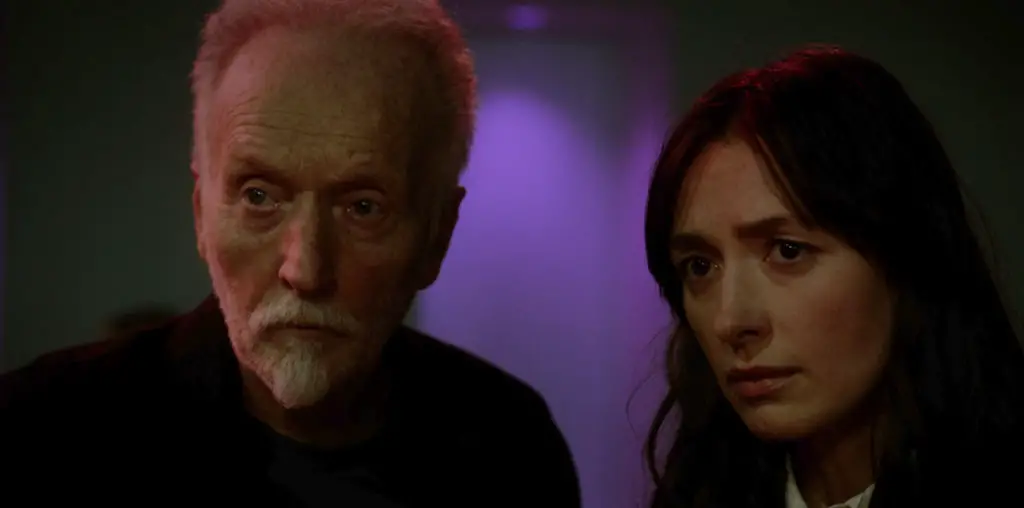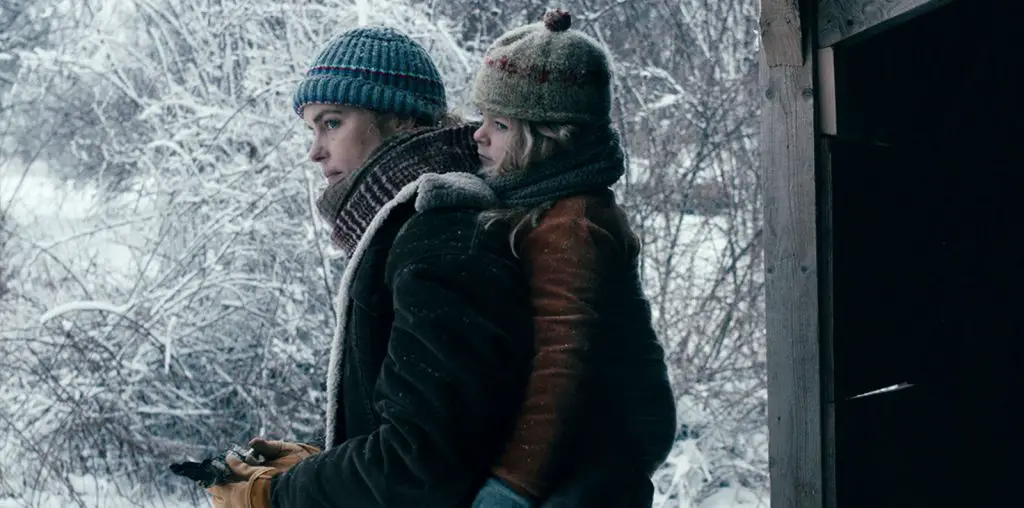
The Apocalypse cinema countdown continues:
“The Noah” (1975)
This relatively obscure masterpiece is deserving of acclaim and attention now more than ever before, as it properly depicts one survivor of civilization forced to endure isolation, loneliness and the inevitable deterioration of his sanity. Bourla never introduces any unnecessary plot elements in the way of obligatory antagonists, or defying the concept of his story of one man on an island, thus “The Noah” keeps his respectful vision of the end of mankind consistently fantastic. Set on a desolate island where supplies are cumbersome but humanity has diminished, our character Noah drifts by a life raft to the shore, and makes it his home. Even though he’s realized that humanity has become extinct due to the war, he makes it his mission to turn the island into his domain and keep himself occupied.
As a soldier he persists in his building of his homes, his patriotism, and his dedication to his duty; but, as time wears on, he discovers boredom and alienation take hold, and he comes across someone named Friday who acts as his friend and confidant, while learning how to live and survive through Noah who takes him under his wing. “The Noah” is kept a consistently stark image of the last of humanity, as he can do nothing but rely on his own wits and survival instincts and fight the inevitable urge to do away with his misery. “The Noah” is also more of an exploration of grief through Noah’s solitude as he realizes he’s the only person left on the planet, and now sees a responsibility in staying alive to preserve his race for all time. Thus is the burden of the last of a species: self-preservation in the face of utter hopelessness.
“Children of Men” (2006)
Due to an unknown epidemic, women around the world have become infertile, and the culture is much more obsessed with youth than they ever were. In 2027, after the world’s youngest man is assassinated, the public goes into frenzy, while most of the world’s powerful nations crumble under anarchy and carnage. Stark pictures of burning landmarks and terror color television screens and propagandist messages on buses, while terrorist attacks by rebel groups shake the city to its core. Only the United Kingdom stands as the primary super power where government rules, corruption reigns, immigrants from far and wide beg to be let in, and the elite distance themselves from the apparent economic and social problems. Particularly Theo who is a man that goes about his business and ignores what’s waiting at his doorstep, hiding in high rise condos and artificial wildlife sanctuaries in a perpetual state of ignorance. That is until Theo is hired by an old friend to transport a young African immigrant named Kee, who he discovers is actually pregnant and in her third trimester.
Seeking sanctuary, the two journeys across the wasteland to safe harbor to save her child, and prevent it from being used for genetic testing and political leverage. Cuaròn’s film is a rather chaotic picture of a world that’s been deprived of the ability to give life, and crumbles underneath the weight of this unusual genetic disability that may or may not be the result of a disease, or the changing climate. “Children of Men” is consistently urgent with an ever scattered world behind Theo’s own, while he’s literally forced into the events taking place. The execution of immigrants, the massive flooding of the population, urban war and decay, and the prospect that he may just be sacrificing his life for something he never wished to be involved in. Truly, it’s a man in a bubble who’s been forced out into the real world, and asked to lie down and die for what may be the last threads of humanity and rejuvenation for society, even if the goal is to shelter it from humanity’s cruelty. While immigrants are caged, and the scum run the land, Theo keeps this bit of innocence at safety’s reach relentlessly. The child may be the saving grace for humankind, but Kee’s desperation to keep it safe reflects her decision that all is lost.
“Planet of the Apes” (1968)
I kind of cheated with this one. While it is post-apocalyptic, the viewer really isn’t aware of this until the pivotal second half, and then it’s perfectly clear what occurred. “Planet of the Apes” is still a rather odd experience to sit through, mainly for its willingness to avoid showing the apes until a good portion of the movie has passed. Written by non other than Rod Serling, “Planet of Apes” is like an extended episode of “The Twilight Zone” filled with terror, social commentary, and the absolutely shocking ending that is still one of the best delivered finishers in film history. I won’t place too much confidence that everyone has seen it by now, but it doesn’t end with an ape Abe Lincoln statue, that’s for sure. The novel from Boulle is drastically different from the film adaptation, but none of the impact is lost from the irony of our primitive counterparts becoming rulers of a jungle land while humans are servants, pets, and test subjects for medical experiments. Ruling over a primitive land, the apes command their civilization in a very militant environment that is far from the Dystopian setting you’d usually be accustomed to. Here Colonel George Taylor crash lands on a distant planet after a space expedition and learns that apes are rulers of this world.
Primitive and yet completely organized in class systems that are identified through the species of apes, much like the human race, Taylor is stuck in a world he’s completely unfamiliar with, and can barely muster the strength to rebel, as the sights startle him. Apes speak English, act as politicians, aristocracies gain leverage over the economy, and the apes even control the human population by hunting them down in lynch mobs and gathering them for different purposes. As Taylor watches his friends die, he inevitably begins to fight back, and, much to the shock of the apes, speaks back defiantly. “Planet of the Apes” features a world and society that’s different from ours and yet perfectly similar, even alluding that the apes are still in their early stages of evolution as a species. It’s scientifically proven that apes are extremely close to our intelligence and comprehension genetically, and “Planet of the Apes” is a masterful adaptation revealing this world of cruelty and military rule, all topped by a fantastic ending that justifies its place in this list. It’s surely one of my all time favorite science fiction films, even in the face of the weaker sequels.
“Kairo/Pulse” (2001)
Ignore the utterly abysmal 2006 remake, and you just may love “Kairo,” an apocalyptic film that deliberately paces itself as a slow burning end of the world tale, rather than an all out orgy of gore and carnage. In Kurosawa’s tale, the end of the world is quiet, behind closed doors, and inevitably hidden in our obsession of technology. “Do you Want to See a Real Ghost?” a mysterious website asks in a biting bit of commentary, to which it immediately cuts to another user on a computer draped in shadows, and inevitably to the exact person on the computer. We live in a time where we’re obsessed with technology, and Kurosawa makes a statement that even though we’re more connected than we were fifty years ago, we’re still just ghosts living through words, isolated from human contact and true communication, and failing to live the lives we were given, all the while the majority of voices we hear are always imitations through technological devices. What happens when ghosts decide that we don’t deserve these lives and should take our place?
What happens when technology becomes our worst enemy? Surely Kurosawa’s tale of the apocalypse through the mercy of machines has much more of a statement than “Pulse ‘06” does in the end, as he follows different people and their inevitable discovery of this gradual extinguishing of the human race, and inevitably connects them. Without our knowledge, we’re watch an Altmanesque horror film following a young man being introduced to technology, a computer teacher, and a few more survivors who realize much too late that the human race has now become extinct. Kurosawa constantly keeps our specters in the darkness and as blurs, but as the signals become stronger, and humans dissolve into black blotches on walls, the undead become a new race and decide that the city is now their own. A plane crashes over our main character Ryosuke disappearing into the horizon, ghosts quickly inhabit a desolate game center, computers turn themselves on and off, and we become witnesses to a bittersweet climax that, in typical form of the sub-genre, reveals that even though a few survive it’s still all lost in a sea of dead electronics, and the dawn of a new race. With our obsession of technology and isolation, would we realize it if the human race suddenly disappeared one day?
“28 Days/28 Weeks Later…” (2003, 2007)
Almost like an Ann Coulter wet dream, Danny Boyle and Alex Garland set down in London where the end of society has been caused not by the government, but by well meaning tree hugging animal activists. My feelings on “28 Days Later…” is hardly a secret as it’s not just one of my favorite horror films of all time, but also, one of my favorite of this ilk. Boyle’s usual gritty, down to Earth style is implemented in what is a rather chaotic and awfully interesting look at the end of the world through a rapid fire infection that brings down London within a month, and may also have spread across the world. Much of that is basically still up for debate, since the infection is so rapid, it’d be impossible for an actual carrier to make it across the waters. “28 Days Later…” is a pure masterpiece that garners much of its influence from “Day of the Dead,” and “Day of the Triffids,” in which a young man in a coma awakes in a hospital room and discovers that all he’s known has crumbled in a hail of blood and carnage by the hands of murderous infected victims who can spread their disease called “Rage” through their blood in a matter of seconds.
Boyle painted some awfully haunting pictures of the world after the end, with a wall of shopping carts, a tunnel littered with abandoned cars, and a church packed with dead bodies. Boyle’s film may not have made much of a dent in the box office, but its picture of a world brought down by a disease was startling enough to dent the genre, and create an influence on future zombie flicks. All the while “28 Weeks Later…” is a faster paced sequel that takes off from Boyle and Garland’s ideas and attempts to expand on them. It barely does this, but does expand on the narrative and continuity, with a commentary on US occupation and government misinformation that leads to even more damage from the Rage Virus than imaginable. “28 Weeks…” may be the more inferior of the pair, but it’s still a daunting picture of the end of society through a merciless disease that brings out the monster in all of us, with some rather fantastic sequences of the infected destroying what was supposed to be a US sanctioned safe haven, sharp shooters being ordered to shoot the infected and being rendered sitting sucks unaware of who is infected and who isn’t, as well as survivors being ravaged in a closed off quarter during a lockdown. Paired, the “28…” franchise is a wonderful glimpse at the gradual end of society through a rapid fire disease that makes us the enemy; because in the end, humanity always destroys itself.


